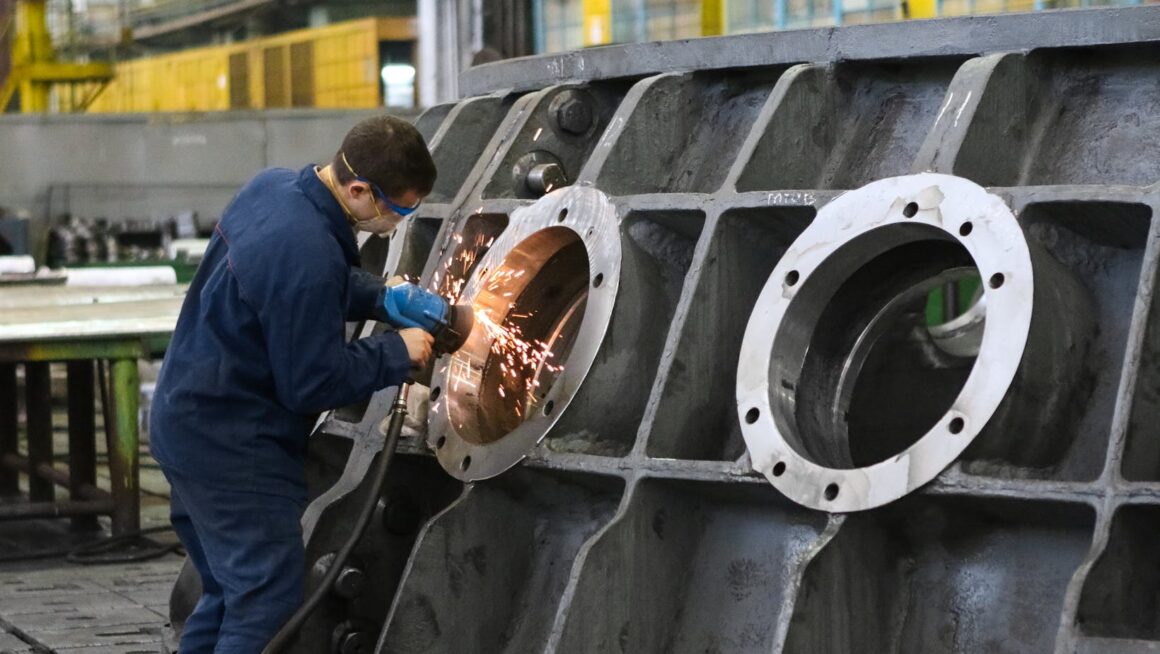
Ever wondered about the magic behind the scenes that transforms raw materials into finished goods? That’s manufacturing technology at work. It’s the engine driving today’s rapidly evolving industries and a key player in global economic growth.
Delving into manufacturing technology, you’ll uncover a world of fascinating processes, innovative techniques, and cutting-edge machinery. It’s not just about production; it’s about improving efficiency, reducing costs, and enhancing product quality. Stay tuned as we unpack this riveting topic and explore how it’s revolutionizing the way we create and consume.
What Is Manufacturing Technology
The question arises, what is Manufacturing Technology? It’s a domain that integrates the utilization of machines, tools, and labor to convert raw materials into finished goods. A part of every industry, from automobiles to food and beverage, textiles to pharmaceuticals, it’s a linchpin for global economic growth.

Take power looms in the textile industry, for instance. Machines, capable of weaving cloth faster and more efficiently than human hands, transform raw threads into fabric. Similarly, in the pharmaceutical industry, complex machinery turns chemical compounds into lifesaving tablets and vaccines.
Different Types of Manufacturing Technology
As an elaboration on the idea of manufacturing technology, it’s pertinent to explore its diverse types. The variety in manufacturing technology mirrors the complexity of this field and underscores its transformative impact on businesses. Dive into three prominent categories: automated assembly and robotics, additive manufacturing with 3D printing, and computer numeric control (CNC) machines.
Automated Assembly and Robotics
Applied principally for efficiency and precision, automated assembly and robotics form a critical component of manufacturing technology. Say goodbye to repetitive, low-precision tasks that are prone to human error. Instead, automated assembly systems perform tasks with unprecedented speed and accuracy. On the other side, robots—particularly those under the banner of collaborative robots (cobots)—work in unison with human operators, augmenting human efforts rather than replacing them. For instance, automobile manufacturers make extensive use of this technology for intricate car assembly processes.
Additive Manufacturing and 3D Printing
Transcending traditional manufacturing constraints, additive manufacturing—commonly known as 3D printing—is another innovative manifestation of manufacturing technology. This approach entails sequentially adding material layer by layer to form an object, guided by a digital model. 3D printers, the magic wand of additive manufacturing, can create diverse items from figurines to engine parts. Indeed, industries as broad as aerospace and medical research are turning to these methods, valuing their flexibility, customization capability, and waste reduction potential.
Computer Numeric Control (CNC) Machines
Lastly, we’ve reached computer numeric control (CNC) machines—an integral part of modern manufacturing technology. CNC machines use pre-programmed software to control the movement of factory tools and machinery. Consider the creation of consistently accurate and complex components—say a precision-engineered airplane part—it’s CNC machines to the rescue. By eliminating manual intervention, these machines offer unvarying quality, eliminate errors, and provide extraordinary detail, making them invaluable in industries from consumer electronics to aviation. Moreover, with innovations in the market, you can now find metal lathes for sale offering CNC capabilities, further enhancing precision and efficiency in metalworking processes.
Importance of Manufacturing Technology
Delving deeper into the world of manufacturing technology, distinct benefits come to light. Let’s uncover how this fascinating field plays a critical role in various aspects like productivity, efficiency, and economic development. Remember, no fluff, just facts.
Enhancing Productivity and Efficiency in Industries
 Manufacturing technology provides ways to boost productivity. Automated assembly lines, for instance, streamline processes, increasing the pace of production. Take the automobile industry, where robotics handles repetitive tasks, assembling vehicles efficiently without worker fatigue.
Manufacturing technology provides ways to boost productivity. Automated assembly lines, for instance, streamline processes, increasing the pace of production. Take the automobile industry, where robotics handles repetitive tasks, assembling vehicles efficiently without worker fatigue.
Moreover, technology opens doors for enhanced precision. CNC machines carve out intricate details in products, eliminating errors typical of human intervention. Similarly, additive manufacturing accelerates product development – 3D printing creates prototypes rapidly, testing design ideas before entering the mass-production stage.
A textbook example is the aerospace industry. Here, parts produced via 3D printing enable faster design iteration, ensuring accurate, efficient outcomes. High productivity and precision don’t just mean better products, they also translate into cost savings for businesses.
Contribution to Economic Development
Moving beyond the walls of individual industries, manufacturing technology plays a vital role in economic growth. It provides the backbone for industries, creating jobs and fostering innovation. For example, the rise of technologies like automation and 3D printing has led to increased demand for skilled jobs, such as systems operators and quality control analysts.
In fact, The World Economic Forum reported that by 2025, machines might cover 52% of total working hours, augmenting the need for workers who can handle sophisticated technology. Additionally, industries utilizing technological advancements contribute significantly to GDP. Armed with this knowledge, support of manufacturing technology can indeed be seen as an investment in a more prosperous economy.
As such, the importance of manufacturing technology lies not only in transforming industries but also in promoting broader economic growth.



